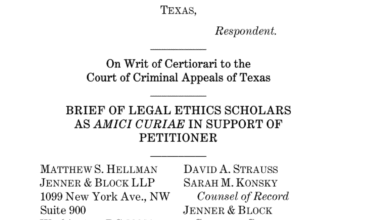Law Firm Support Staff Structure: Build for Growth & Efficiency

15 minutes read
Published Sep 22, 2025
Transform your law firm’s efficiency and profitability by optimizing your support staff structure. Discover how modern approaches, from centralized teams to strategic technology investments, are enabling firms of all sizes to enhance client satisfaction and ensure lawyers focus on high-value, billable work.
Your law firm’s support staff structure can mean the difference between a practice that runs smoothly and one that constantly struggles. It directly affects whether your lawyers spend their time on billable legal work or get stuck handling admin tasks, how quickly invoices get paid, and whether clients feel taken care of.
Many firms still operate with support staff structures designed decades ago, when every attorney had a dedicated assistant and all files were physical. But the legal landscape has changed dramatically. Remote work, advanced legal technology, and evolving client expectations now require new approaches to organizing support teams.
The firms that get it are doing things differently—using centralized teams, hybrid models, and smart technology investments to deliver more with less. In this article we’ll show you exactly how to build that same high-performing law firm support staff structure for your practice. You’ll learn how to assess your current setup, choose the right model, and implement changes that boost efficiency and profitability.
Want to see how Clio supports every role in your law firm’s structure—helping staff work smarter, collaborate better, and deliver more value? Book a personalized demo today.

What is support staff in a law firm?
Law firm support staff are the non-lawyer professionals who keep firms running smoothly. This includes paralegals, legal assistants, administrators, billing specialists, receptionists, document managers, and more. They handle the daily operations, from welcoming new clients to collecting payments, so lawyers can focus on the legal work that brings in revenue.
What is a law firm support structure?
A law firm support staff structure is how you organize your non-lawyer staff to get work done. It defines reporting relationships, determines how tasks get assigned, and establishes which support staff handle specific responsibilities.
Three primary models dominate law firm support staff structures:
- Centralized structures pool support staff in a law firm into specialized teams. For example, all paralegals work from one department serving any attorney, the billing team handles all invoices firm-wide, and coverage takes priority over personal relationships.
- Decentralized structures assign dedicated law firm support staff to specific people and areas within the firm. For example, each partner is supported by their own assistant, and practice areas have paralegals dedicated exclusively to them.
- Hybrid structures combine remote and offshore support with in-house teams. For example, firms might use offshore paralegals for document review while keeping local assistants for client-facing work, or employ remote billing specialists while maintaining in-house case managers.
Keep reading for a deeper dive into support staff structures.
Why your law firm’s support team setup matters
Your law firm’s support staff structure impacts every part of your practice. When organized effectively, it creates meaningful advantages:
- Lawyers can focus on billable work rather than administrative tasks, ensuring their time is spent on activities that only they can complete.
- Billing, invoice processing, and collections happen more efficiently when dedicated staff own and manage these processes from start to finish.
- Clients receive more consistent service because coverage systems ensure that someone is always available to respond promptly to their needs.
Poor law firm support staff structure creates the opposite effect:
- Tasks bounce between staff members without clear ownership, leading to confusion and inefficiency.
- Deadlines get missed when the responsible person is unavailable and no backup system exists to provide coverage.
- Partners spend valuable time on administrative tasks that support staff could complete more efficiently and at a fraction of the cost.
Research from BigHand reveals that centralized support models are gaining adoption because they demonstrate clear benefits. Firms using specialized teams report better coverage, enhanced operational efficiency, and lower overall costs compared to traditional one-to-one arrangements.
Key roles in a modern law firm support structure
Before you can organize your support team effectively, you need to understand who does what. Law firm support staff roles are evolving rapidly, with firms giving their support staff more autonomy and broader responsibilities than ever before. Let’s look at the key positions and how they’re changing:
- Paralegals and legal assistants handle substantive legal work under lawyer supervision. They research case law, draft documents, manage discovery, and maintain case files. Modern paralegals function as key legal collaborators, handling client communications and case management. While legal assistants typically focus more on administrative work and organizational tasks, they increasingly blur the line with paralegal work, taking on document drafting, client communications, and some research tasks.
Explore Clio’s resources for paralegals for tips on maximizing paralegal effectiveness.
- Law firm administrators and office managers oversee firm operations. They manage technology, negotiate vendor contracts, ensure compliance with trust accounting rules, and coordinate between departments. In smaller firms, one person might wear all these hats, while in larger firms, these roles split into specialized positions. Increasingly, they also champion the adoption and integration of new legal technology, helping ensure the firm stays competitive, efficient, and ahead of industry change. What was once basic office management has evolved into strategic business operations.
Learn how administrators leverage technology in our guide to legal tech tips for law office administrators.
- Administrative and executive assistants manage schedules, coordinate meetings, handle correspondence, and maintain client contact. They often serve as the first point of contact for clients and help manage workflow between attorneys and other staff. Senior partners’ assistants typically handle more complex responsibilities including some client relationship management and billing coordination.
- Billing and finance staff manage time entries, prepare invoices, track payments, handle collections, and maintain financial records. They ensure compliance with client billing guidelines, manage trust accounts, and generate financial reports. Their role has become increasingly critical as clients demand more detailed billing information, faster turnaround times, and more complex billing models like alternative fee arrangements.
- Document and litigation support specialists manage electronic filing systems, coordinate document productions, maintain case databases, and ensure compliance with court filing requirements. They often handle trial preparation logistics including exhibit management and presentation materials.
- Knowledge management professionals, primarily in larger firms, maintain precedent databases, research resources, and best practices documentation. Professional Support Lawyers (PSLs) are typically experienced attorneys who focus on legal research, training, and creating reusable work product rather than direct client service. PSLs play a strategic role by developing firm-wide expertise, maintaining quality standards, and ensuring consistent work product across all practice areas—making them essential for firms scaling efficiently.
Legal support team structure models to consider
Most firms use one of four basic models to organize their law firm support staff. Each comes with distinct advantages and challenges. Understanding these options helps you choose what fits your practice, or more commonly, blend elements from different models to create your own approach.
Traditional one-to-one model
This familiar model assigns each lawyer a dedicated legal assistant. The primary advantage is personalized service—assistants develop deep familiarity with the attorney’s clients, preferences, and working style. This model works best for senior partners with complex client relationships and varied work types.
The drawbacks, however, are becoming harder to ignore. When your assistant is sick or on vacation, work grinds to a halt. You’re paying for full-time help even when the workload fluctuates significantly. If your assistant leaves, years of institutional knowledge walks out the door. And if they don’t excel at something—say, e-filing—you’re stuck with subpar support in that area.
Industry trends show this model becoming increasingly rare except at the most senior partnership levels. Research from BigHand reveals that 63% of legal professionals say they expect their direct model to drop from 70% to 9% by 2025.
Centralized support teams
Centralization pools all support staff in a law firm into specialized departments. Paralegals work as a team, taking assignments from any lawyer. The billing department handles all invoices. Reception covers all calls.
This model excels at efficiency as work naturally balances across the team, so when one person is swamped, others can pick up slack. Specialists are able to develop deep expertise because they focus on one area, coverage during absences is automatic, and firms report significant improvements in both service consistency and cost management after centralizing.
The tradeoff is the loss of personal service. Some lawyers dislike not having a dedicated assistant or team they can work more closely with. Work can feel less personally managed when it’s handled by whoever is available, and the quality of output can vary. Success requires strong management and clear workflows, or tasks can fall through cracks.
Hybrid support models
Hybrid structures balance external and internal resources. A firm might rely on offshore paralegals for tasks like document review or research, while reserving in-house staff for high-touch responsibilities such as client communication and courtroom support. Or they might employ remote billing specialists and virtual receptionists while maintaining in-house case managers and senior paralegals.
This flexibility lets you access global talent pools at different cost points while maintaining local presence where client relationships matter most. You can leverage time zone differences, having offshore staff work overnight on discovery while your local team handles daytime client needs. You can also begin to scale specialized skills without geographic constraints, such as finding expert e-discovery support regardless of location.
However, with the hybrid schedule, complexity can be a challenge. Coordinating across time zones and managing remote teams requires different skills and systems. Additionally, some clients may have concerns about confidentiality when work goes offshore. Technology infrastructure also becomes critical when teams are distributed (this is where cloud-based case management software steps in). Management can also become more complicated when you’re supervising both local and remote staff with different cultural expectations and working styles.
Outsourced support functions
Outsourcing your legal support staff needs means moving entire functions to external providers. For example, document review goes to a managed service, reception goes to a virtual answering service, and bookkeeping goes to an accounting firm.
When outsourcing support you gain predictability as costs are fixed and service levels are contracted. You’ll also gain access expertise and technology that might be too costly to bring in-house. Scaling up or down becomes easier since it doesn’t require hiring or firing, and reduces your management burden as the vendor handles day-to-day supervision.
That said, you trade control for convenience. Quality depends on your vendor’s performance, while security and confidentiality require careful vetting. Institutional knowledge develops outside your firm, and some clients may object to their work being handled by third parties.
Trends reshaping law firm support staff
If you’ve been in legal practice for more than a few years, you’ve probably watched the traditional support model slowly unravel. The changes started gradually with a firm here or there trying something different, but now these changes are accelerating across the industry. Here’s what’s actually driving these changes and why they matter for your firm:
- Centralization is becoming the new standard. Pooled support teams deliver better results than individual assignments and firms using centralized models are able to cut support costs while maintaining or improving service quality. When staff work in teams rather than silos, knowledge spreads, coverage improves, and quality becomes consistent.
- Technology is changing job descriptions. Legal AI tools now handle document review, contract analysis, and legal research that once required significant support staff time, and workflow automation software routes tasks automatically for you. Clients are now able to communicate and self-serve through portals. These changes have lead to the same work that once required five people a decade ago, to only needing three today. But that doesn’t mean there are fewer legal jobs; rather, the roles, responsibilities, and expertise required are shifting.
- Staff-to-lawyer ratios have shifted dramatically. The old one-to-one support staff structure standard is disappearing with many firms now operating successfully at one-to-three or one-to-four ratios. This works because of better organization and technology that multiplies human effort, not because people are being pushed harder.
- Remote work has changed the talent landscape. Geography no longer defines your talent pool, allowing you to widen your search when hiring for a new role. Support staff expect flexibility, and firms demanding full office presence are losing talent to competitors who offer remote or hybrid options. Cloud-based technology like Clio allows all members of your firm to access what they need, anywhere, anytime.
- Client demands are the ultimate driver. Clients want immediate responses, transparent billing, and predictable costs, and these expectations are only growing with the introduction of AI. Clients are also more likely to scrutinize line items and push back on inefficiency to ensure they are billed a fair, affordable rate. The legal support staff structure that worked when clients paid without question doesn’t work when they demand value for every dollar. This is why alternative billing models, such as flat fees, are becoming the new norm for law firms.
How to audit and improve your firm’s staffing framework
Most firms operate on assumptions about how work gets done, they think they know who handles what, how long tasks take, and where bottlenecks occur. But when you actually track the work, reality rarely matches the org chart.
Before implementing any changes to your law firm support staff structure, you need to understand what’s really happening in your practice. Follow these steps to do just that:
Step 1: Map your actual workflows
Spend one week following work through your firm—not how it’s supposed to flow, but how it actually moves. Track several matters from intake to invoice, note who touches each task, how long they spend, and where work sits waiting. Then, calculate the ratio of support hours to attorney hours for different matter types.
Most firms make surprising discoveries: partners spending entire Friday afternoons on tasks an organized assistant could handle in an hour, paralegals waiting for assignments while attorneys draft routine documents, and critical deadlines at risk because only one person knows about them.
Step 2: Identify your biggest pain points
Patterns emerge quickly once you start looking into your current workflows, and you’ll notice where work stalls at the same points repeatedly. Certain staff members are drowning while others have consistent downtime and tasks bounce between three people before someone takes ownership.
Common problems include no backup coverage (everything stops when someone is out), unclear responsibilities (three people think someone else owns it), and misallocated work (attorneys handling repetitive, time-consuming tasks, while legal support staff sit idle).
Step 3: Pick one win and prove the concept
Don’t try to fix everything at once. Choose a single, contained function that’s causing pain—billing preparation and document filing are good candidates. Assign clear ownership to one person, document every step of the process, establish backup coverage, then measure performance for 30 days: completion time, error rates, and cost.
When this focused improvement works, you’ll have concrete evidence to support broader changes. Success in one area builds momentum and buy-in for larger restructuring.
Step 4: Add technology strategically
Technology should solve specific problems your audit identified, not create new ones. If document formatting consumes hours weekly, automation makes sense. If task handoffs cause delays, workflow management helps. If billing is chronically late, time capture tools address the root cause.
Legal practice management software like Clio helps organize law firm support staff by providing centralized task management, automated workflows, and real-time visibility into workloads.
Step 5: Invest in your existing team
Before hiring, look at who you already have. Your receptionist might excel at client intake with proper training, or your administrative assistant likely has untapped capacity for paralegal tasks if given the opportunity.
Internal development succeeds better than constant external hiring because your people already know your firm, your clients, and your culture. Plus, it demonstrates that efficiency
improvements create opportunities, not job losses.
Training requirements for legal support staff vary by role, but investing in development pays dividends. Consider resources like advanced template design for paralegals or how legal administrators use Clio to boost capabilities without the cost and disruption of new hires.
Step 6: Pilot changes and measure outcomes
Run your improved structure for 60 days before expanding. Track concrete metrics such as:
- Task completion times
- Error rates
- Cost per matter
- Realization rates
Expect an adjustment period as people need time to adapt to new workflows.
Document what works and what doesn’t, and gather feedback from both attorneys and support staff. You’ll then be able to refine processes based on actual results, not theoretical benefits.
This approach scales to any size practice. For example, solo practitioners might complete the audit in a day, while large firms might need weeks. The principles, however, remain constant: understand reality, identify problems, test solutions, measure results, and iterate based on evidence.
For firms just starting out, Clio’s guide to getting support offers an additional framework.
Technology’s role in modern support structures
Technology can amplify law firm support staff structures, making well-organized teams incredibly efficient. Here’s what actually moves the needle:
- Legal practice management software serves as your operational backbone. It connects all other tools through integrations, or has various capabilities built right in, and ensures everyone sees their assignments, priorities, and deadlines in one place. When nothing falls through cracks and workloads are visible in real-time, support teams can self-manage rather than constantly seeking direction. Clio helps organize support teams by centralizing these functions into one platform.
- Document automation transform hours of repetitive work into minutes, instead of support staff manually creating documents from scratch, forms populate from existing data and contracts generate from tested templates. This frees your team for work that requires human judgment such as client conversations, strategic decisions, and complex problem-solving.
- Workflow tracking and reporting reveal how work actually moves through your firm, showing you where delays occur, who is overwhelmed, and what’s falling behind. This visibility lets you spot problems before they affect clients and adjust workloads before people burn out.
- Online legal payment solutions directly impact cash flow. When clients can pay online immediately, when time capture happens automatically, and when trust accounting maintains itself with proper compliance, your revenue cycle compresses.
- Integration and scalability tie everything together. When systems connect, work flows without manual handoffs, and as your firm grows, the same structure scales without linear hiring.
- Legal AI increasingly handles first-draft work. Rather than replacing staff, AI elevates their work—paralegals spend less time on document review and more time on case strategy, while administrators use AI-powered analytics to make data-driven operational decisions.
Building a scalable support model for the future
The most successful firms treat their support structure as a living system that evolves with their practice. As you grow, your support needs change—what works for a five-attorney firm won’t scale to fifty. Building flexibility into your structure from the start prevents painful reorganizations later.
Consider succession planning for key support roles. Document critical processes before staff members retire or leave, cross-train team members to prevent single points of failure, and create clear career paths that show support staff how they can advance within your firm.
Most importantly, recognize that restructuring is a strategic investment in your firm’s future, not just a cost-cutting exercise. The right support structure enables growth, improves work-life balance for everyone, and ultimately delivers better outcomes for clients.
Final thoughts on law firm support staff structures
Your law firm support staff structure directly determines operational efficiency, profitability, and client satisfaction. The traditional one-to-one model simply can’t meet the demands of today’s legal practices. Successful firms are adopting flexible, technology-enabled support systems that align with how work actually flows.
Remember that restructuring focuses on working smarter, not just cutting costs. When done thoughtfully, these changes benefit everyone: attorneys focus on higher-value work, support staff engage in more meaningful tasks, and clients receive better service at better value.
Empower every legal support staff role with Clio. From paralegals and legal assistants to admin teams, Clio connects your staff, simplifies workflows, and strengthens your support structure, book your free demo today!
What law firm support roles can be automated?
Document assembly, invoice generation, appointment scheduling, initial client intake, conflict checking, time entry, and routine correspondence can all be automated. This frees support staff to focus on client relationships, complex problem-solving, and tasks requiring human judgment.
How can restructuring support staff improve law firm profitability?
Restructuring improves profitability by reducing redundancy, improving utilization rates, and freeing lawyers for billable work.
How does practice management software help organize legal support teams?
Practice management software centralizes task assignment, tracks deadlines, and provides real-time visibility into workloads. It ensures clear responsibilities, automates routine workflows, and prevents work from falling through cracks—keeping support teams coordinated and efficient.
Loading …
Subscribe to the blog
Source link


